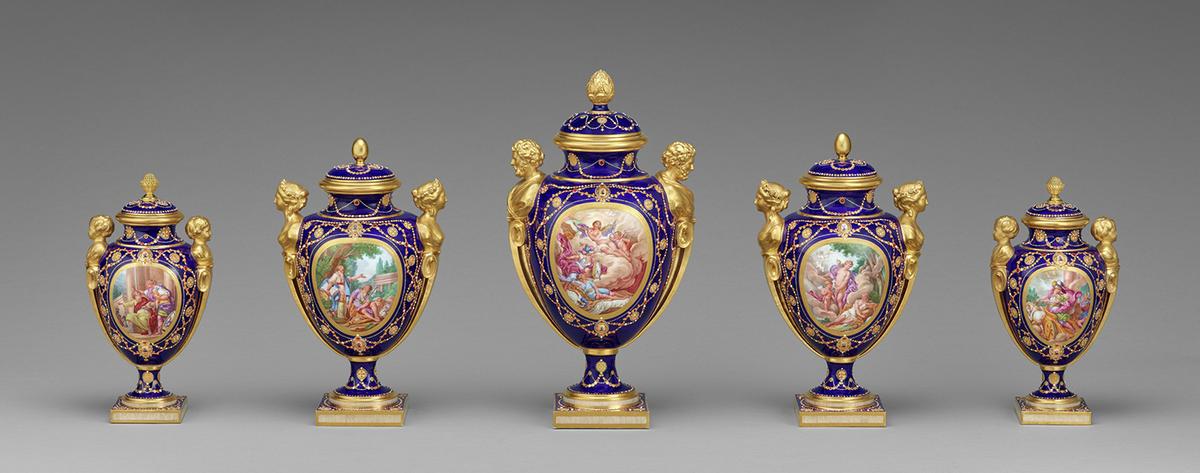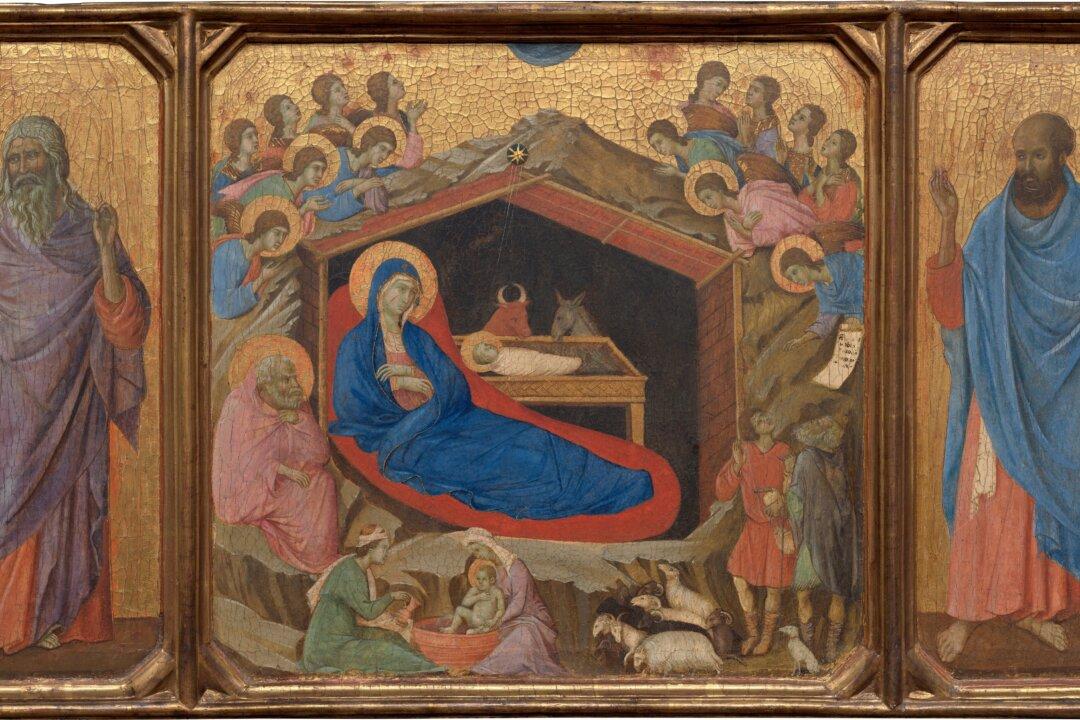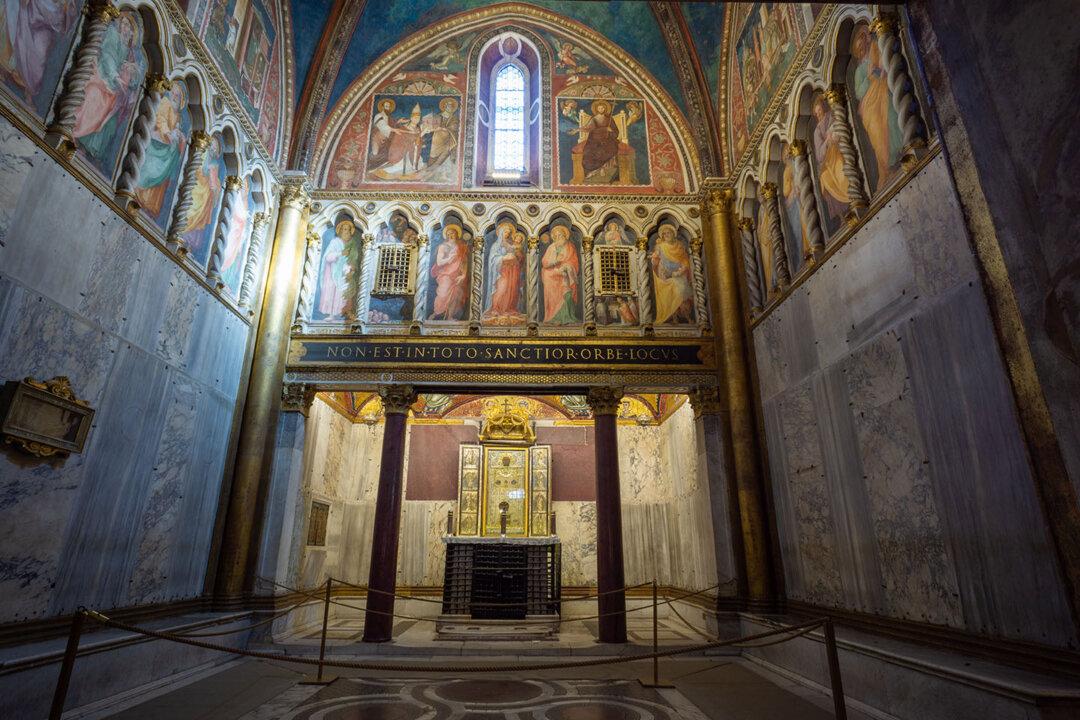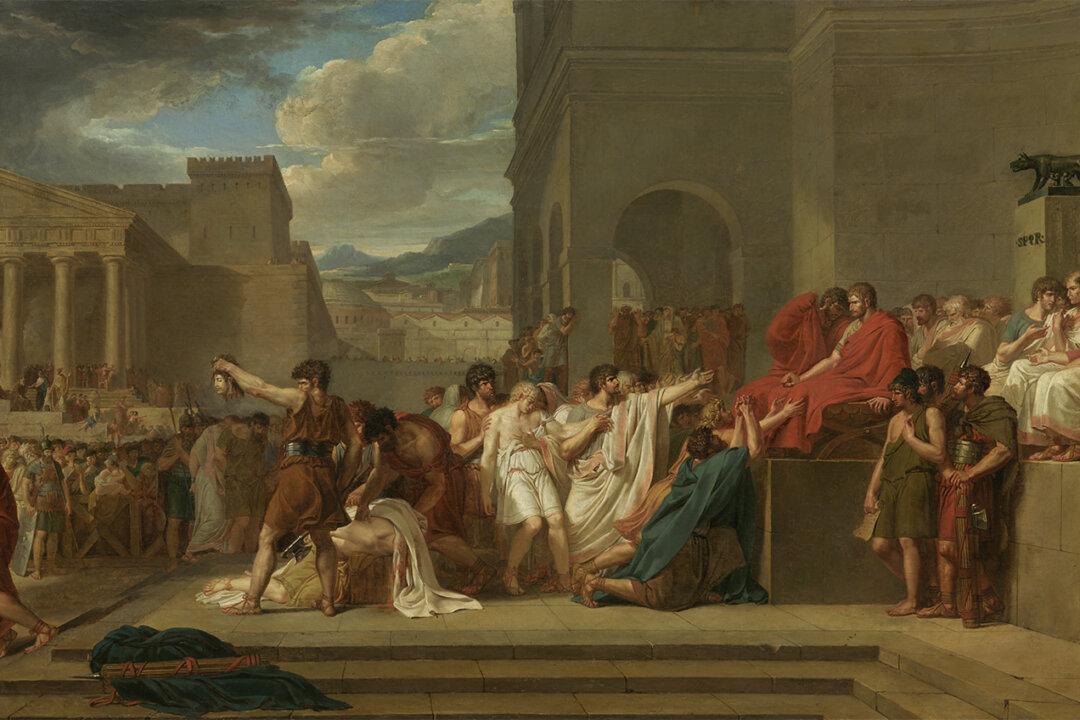For the first time since the French Revolution, a group of exquisite vases are reunited in an exhibition at the Getty Center in Los Angeles, over 200 years after their dispersal from the Royal Palace of Versailles. The vases, luxuriously made in turbulent times, bear witness not only to the sophisticated artistry of the craftsmen and the lavish lifestyle of their illustrious patrons, but also to a distant cultural imagination that took root in a society ripe for momentous change.
‘Vases of the Ages’

"Five Lidded Vases," 1781, by Sèvres Porcelain Manufactory. Soft-paste porcelain. Three central vases from the J. Paul Getty Museum, Los Angeles, and two end vases from The Walters Art Museum, Baltimore. Courtesy of J. Paul Getty Museum





